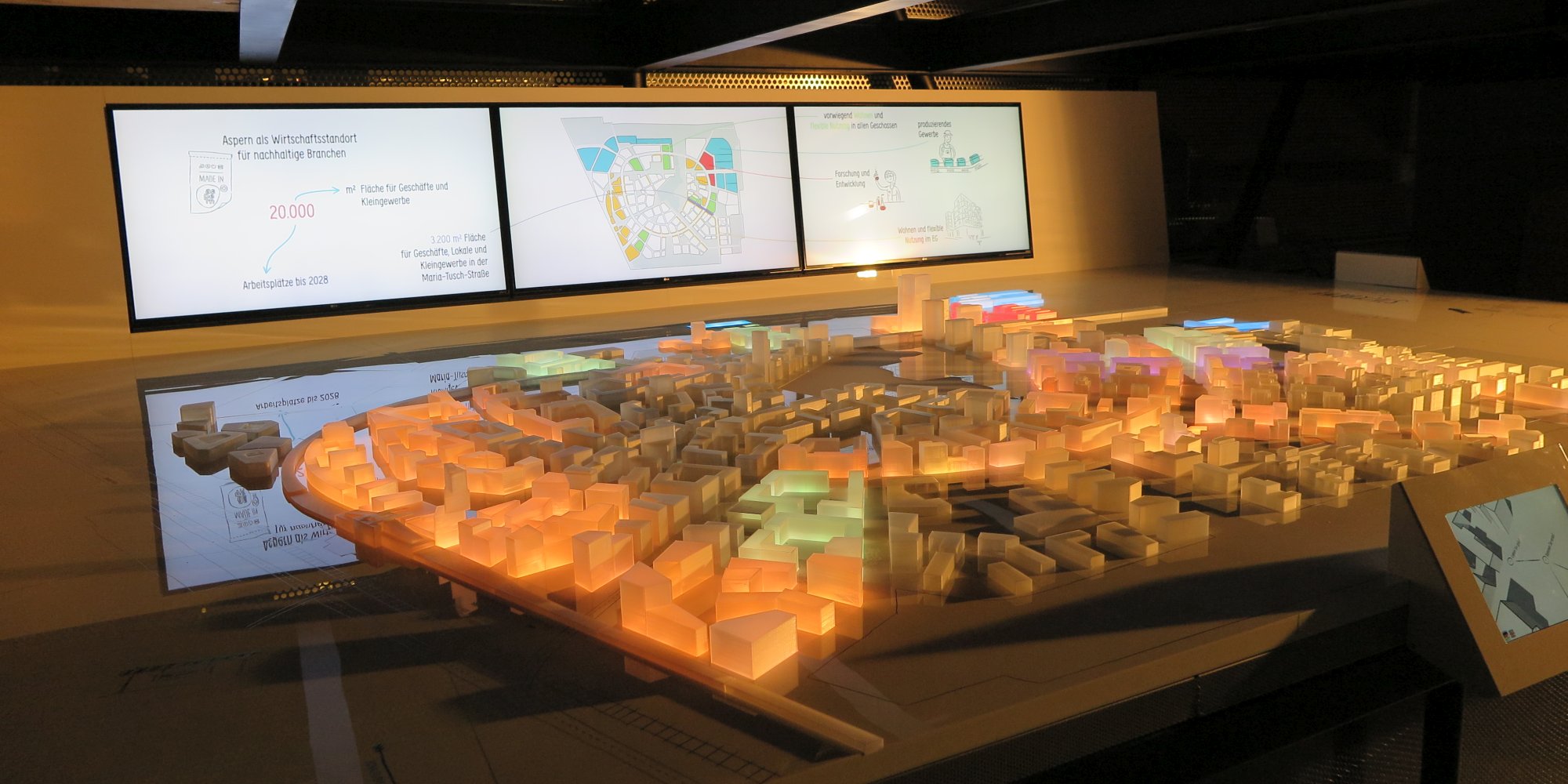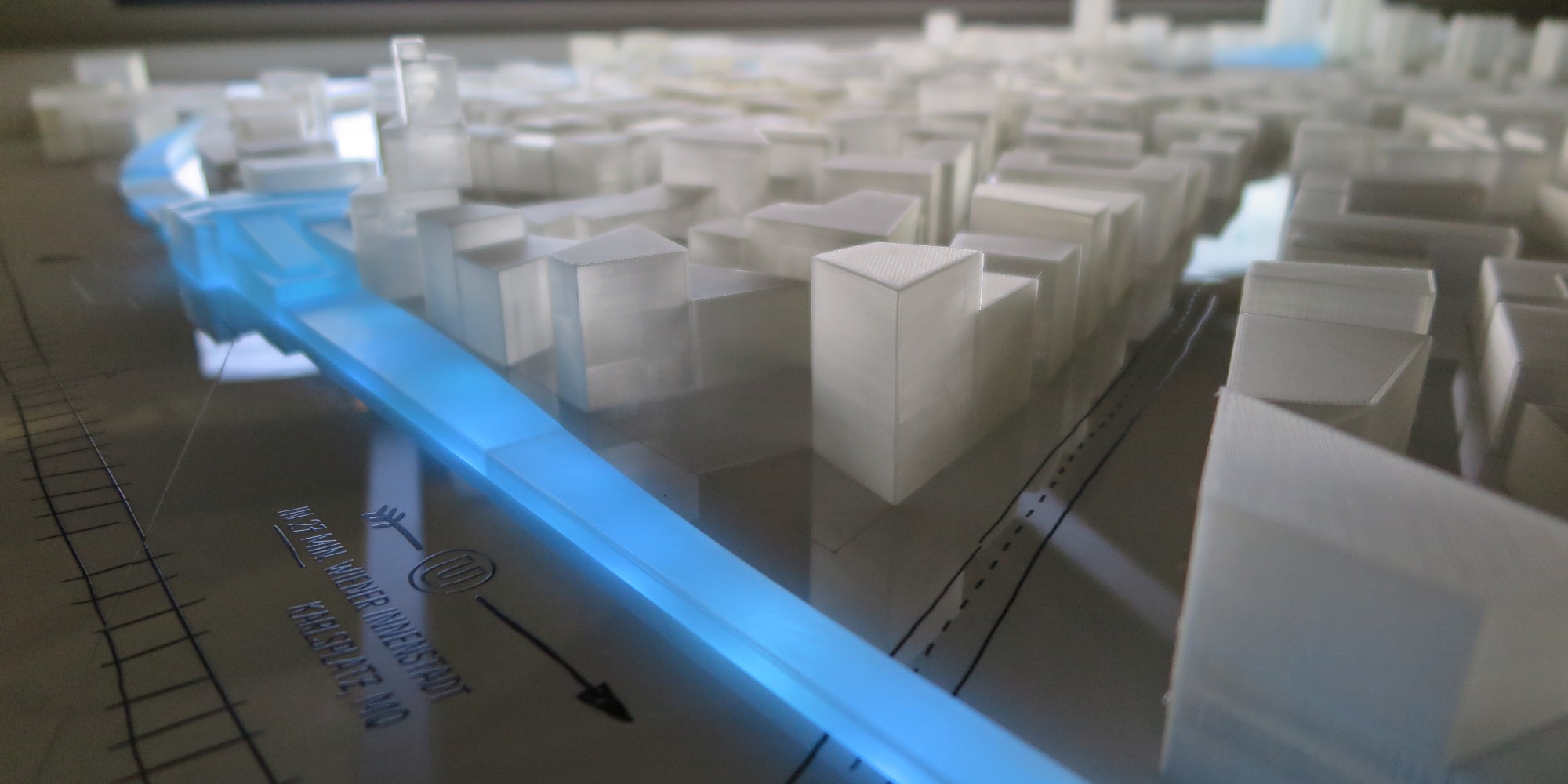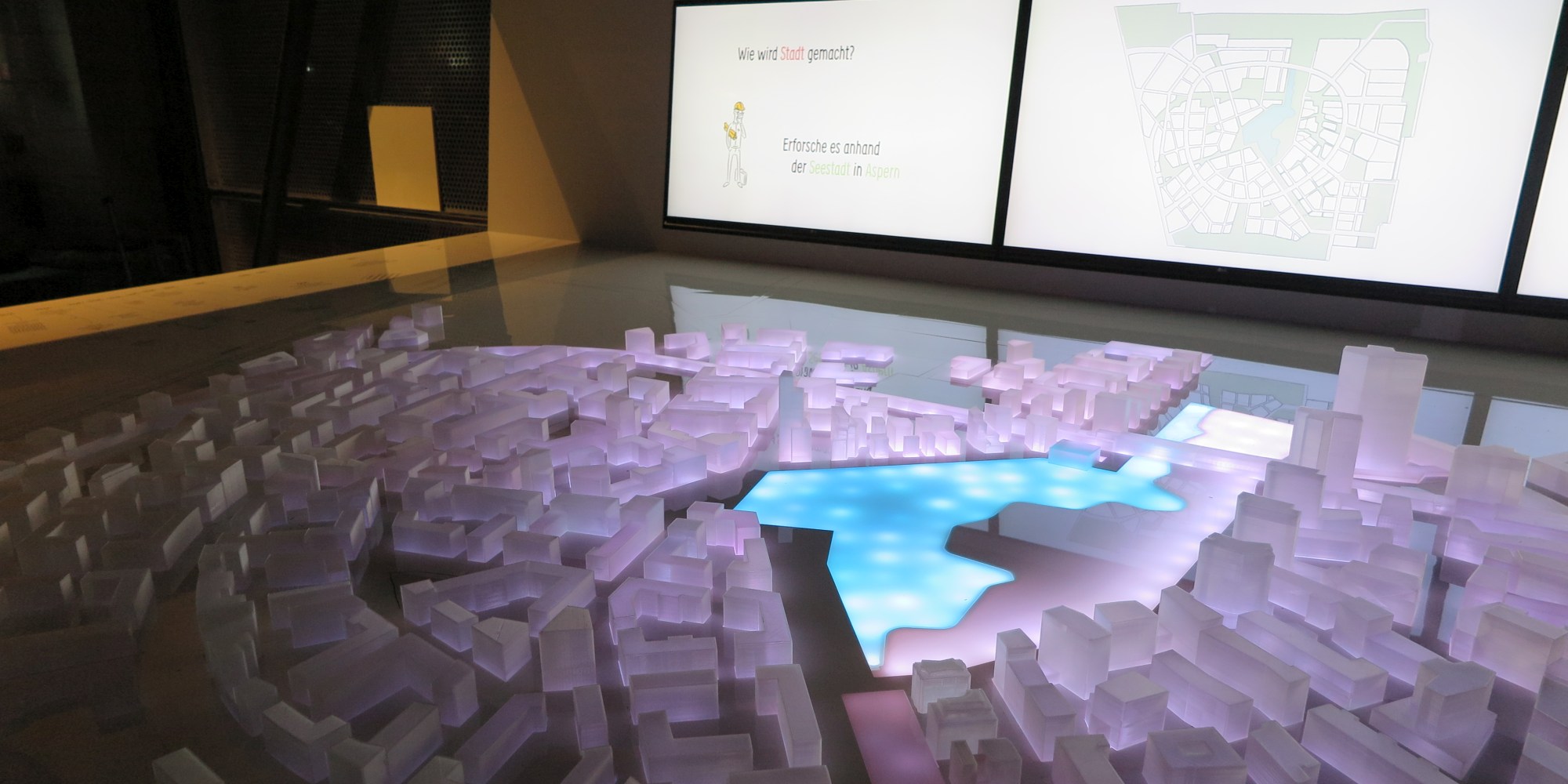In the role of a scientific partner of the Technical Museum Vienna, the Ars Electronica Futurelab is advisory and realizes projects within the scope of an exhibition-series “Weiter_Gedacht_” (one step further). In the case of the first of three events between 2016 and 2021, the title “Die Zukunft der Stadt” (The urban future) called for the development of a planning table of the lakeside city Aspern and a true scale model of the biggest building on earth Burj Khalifa.
The exhibition which was on display between June 2016 and June 2018 asked for the way people would like to lead their future lives, especially with hindsight to the growing density of urban spheres. One of the possibilities to give answers to the questions involved, was the planning table of the lakeside city Aspern – a model for orchestrated city development at the gates of Vienna – that was built by the Ars Electronica Futurelab. With the help of this model, the visitors could take part in the city planning by cultivating an empty space that was left out for “new worksites”. The city model consisted of individual edifices and plots of land to be constructed, all of which could be illuminated from below. Located behind it were several screens that visitors could use to select various topics. These themes or concepts were explained, whereby the individual elements were color-coordinated with the corresponding project elements. For instance, when the subject was parks, the areas that are proposed for such usage were illuminated in green.
The complex context of topics, which are related to city planning and its realization were reduced to a very simple visual language. Small clips demonstrate how small complexes are growing in realtime by aid of naïve drawings.
Read more on the Ars Electronica Blog.
Credits
Conception & project management: Christopher Lindinger, Marianne Eisl
Development: Michael Mayr, Clemens Francis Scharfen, Marianne Eisl
with support from: Stefan Eibelwimmer (graphic design), INSEQ Design (construction of table)


